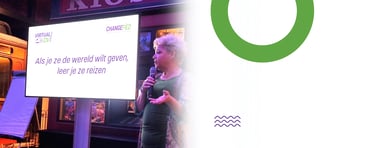Step in and Discover the Future of Independent Travel!
Virtual Public Transport is an innovative Virtual Reality platform originally developed for neurodivergent individuals, such as those with autism or mild intellectual disabilities, but also valuable for anyone who wants to travel independently using public transport, including elderly people and vocational students. Think of elderly people who want to maintain their mobility or vocational students who need to travel independently to their internships.
In a safe and realistic VR environment, users practice essential travel skills, train their executive functions, build self-confidence, and prepare themselves for the real world!
Develop crucial skills in a safe Virtual Reality environment
Virtual Public Transport offers a structured and low-stimulus learning environment where users learn to travel independently with public transport step by step.
Our advanced 6DoF technology provides a realistic experience and helps students train their executive functions, such as time management, maintaining attention, and planning. This optimally prepares your students for independent travel.
-
Promoting social inclusion
-
Becoming self-reliant
-
6 degrees of freedom
-
Promoting social inclusion
-
Becoming self-reliant
-
6 degrees of freedom
Learn to plan trips
Coping with unexpected situations such as delays
Selecting the right bus or train
Social interactions in public transport
Simple Implementation,
Powerful Results
Our plug & play public transport training only requires a VR headset with accompanying software. With our train-the-trainer program, caregivers learn how to optimally support clients while using Virtual Public Transport.

Virtual OV for Autism: Independent Travel and Personal Growth
How can we help young people with autism become more independent and discover more of the world?...

Independence and Parental Support in Student Transport
Independence and Parental Support in Student Transport: The Role of Municipalities, Education, and...

From language development delay to Independence
In a world where independence and mobility are becoming increasingly important, the Virtual Reality...
Impact
Getting familiar with public transport
Virtual OV aims to make users confident and lower the threshold for travelling by public transport. By recreating everyday travel situations in VR.
In this way, participants can practice safely and without limits before they actually hit the road by simulating everyday travel situations.
Development of Crucial Cognitive Skills
Travelling by public transport is more than just following routes. It requires mastering cognitive skills such as planning, problem-solving, and maintaining attention.
Virtual OV contributes to the development of these essential cognitive skills, making participants better prepared to travel independently.
Promoting social inclusion
Another important goal is to promote social inclusion. Virtual OV prepares participants for social interactions on public transport, giving them more confidence in interacting with fellow passengers and staff. This opens the door to greater social inclusion and better participation in society.
Stress Reduction and Anxiety Management
New situations can cause anxiety and stress. In Virtual OV, participants become familiar with unexpected situations within public transport, such as delays or the loss of their ticket. As a result, they are better prepared and more confident when they actually take the step to travel.
Our Partners:



Join us and become just as enthusiastic as we are!
Discover how Virtual OV can help your students grow in self-reliance and self-confidence.
